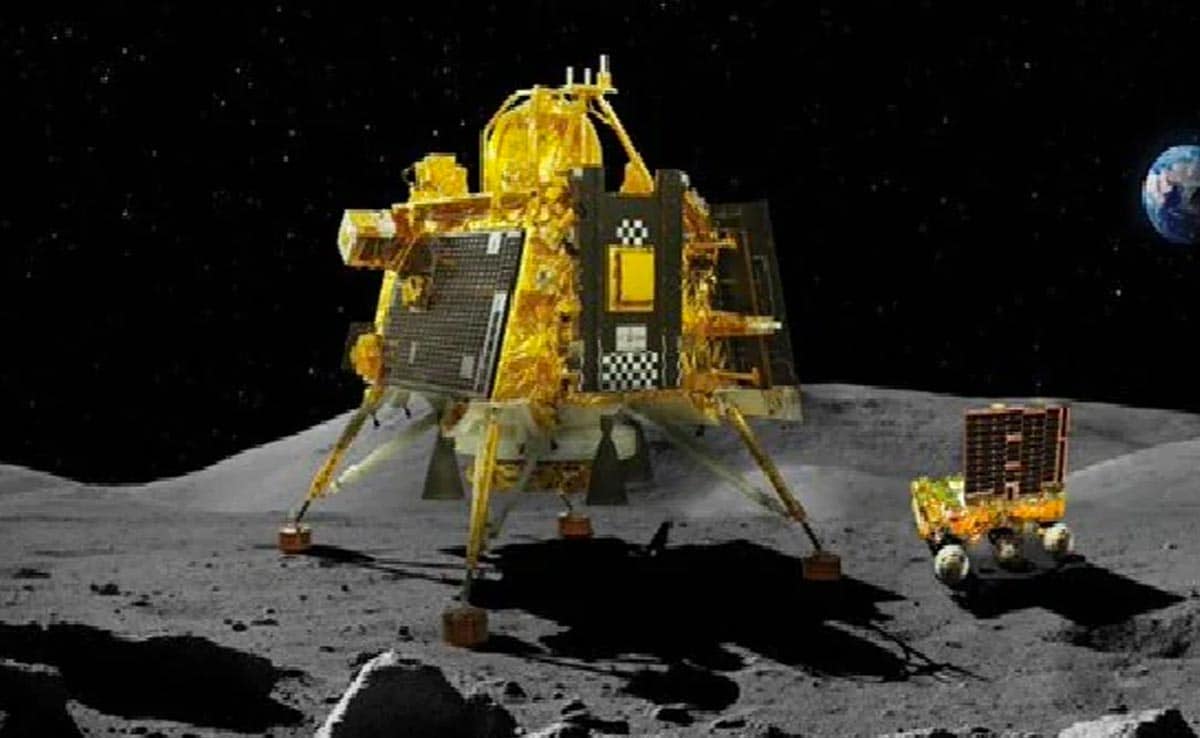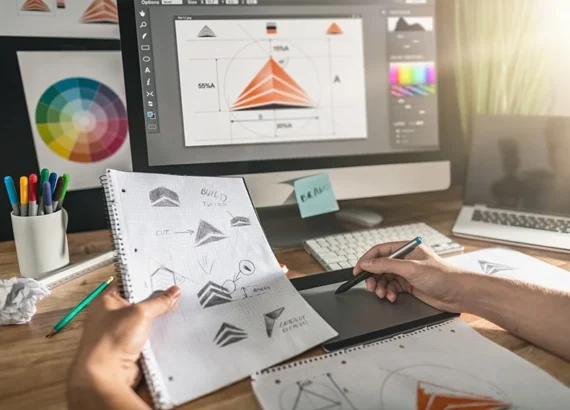India Created History by Chandrayaan 3 Mission
The Chandrayaan 3 Mission is a significant endeavor undertaken by the Indian Space Research Organisation (ISRO) to further explore the mysteries of the moon. Building upon the achievements and lessons learned from the Chandrayaan 2 Mission, Chandrayaan 3 aims to continue India’s pursuit of lunar exploration and scientific discovery. This ambitious mission seeks to propel India’s space program to new heights by advancing our understanding of the moon’s geology, composition, and potential for resources. With a focus on innovation, collaboration, and technological excellence, Chandrayaan 3 holds the promise of unraveling new insights about the moon and paving the way for future lunar missions.
1. Introduction to Chandrayaan 3 Mission
Background and Context
Hey there, space enthusiasts! Get ready to embark on an exciting journey as we dive into the marvelous Chandrayaan 3 Mission. So, what’s the deal with Chandrayaan 3? Well, it’s India’s third lunar exploration mission and boy, are they aiming high! It’s a follow-up to the previous Chandrayaan 2 mission, which had its ups and downs (literally). But hey, failure is just a stepping stone to success, right?
Purpose and Significance
Now, you might be wondering, why go back to the moon after Chandrayaan 2? Good question! The purpose of Chandrayaan 3 is to continue the exploration of our celestial neighbor, the Moon, and gather more knowledge about its composition, mineralogy, and even look out for signs of water. Plus, it’s a massive boost for India’s space agency, the Indian Space Research Organisation (ISRO), in their quest to master the art of lunar exploration. Talk about shooting for the Moon, quite literally!

2. Objectives of Chandrayaan 3 Mission
Lunar Exploration Goals
What’s on the to-do list for Chandrayaan 3? Well, first and foremost, it aims to expand our understanding of the Moon’s surface, its geology, and the presence of water molecules. Perhaps we’ll get closer to unveiling some lunar mysteries, like what really happened to all those missing socks we’ve lost over the years?
Technological Objectives
But wait, there’s more! Chandrayaan 3 also has some technological objectives. It aims to demonstrate India’s capabilities in soft landing on the lunar surface, which means making a gentle touchdown, just like a cat gracefully landing on its paws. Besides that, it will showcase some cool advancements, like improved navigation and guidance systems. Who says exploring the moon can’t be technologically hip?
3. Design and Components of the Chandrayaan 3 Spacecraft
Overview of Spacecraft Design
Alright, let’s talk spacecraft! Chandrayaan 3 is designed to be similar to its predecessor, with a few upgrades thrown in for good measure. It consists of an orbiter, a lander, and a rover, all working together like a well-rehearsed dance troupe.
Payload Instruments and Equipment
Now, onto the juicy details – the payload instruments and equipment. Chandrayaan 3 is equipped with a payload that includes various scientific instruments, like a terrain mapping camera, a lunar surface thermophysical experiment, and a rover-mounted alpha particle X-ray spectrometer, which sounds fancy, doesn’t it? These instruments will gather valuable data about the Moon’s surface and help scientists better understand its secrets.
Communication and Navigation Systems
Of course, what’s a space mission without proper communication and navigation? Chandrayaan 3 has got it covered with its reliable communication and navigation systems. It’ll stay in touch with Earth through high-gain antennas and, just like a GPS for astronauts, it will have precise navigation systems to make sure it reaches its lunar destination without getting lost like a spacecraft playing Hide and Seek.
4. Launch and Mission Timeline of Chandrayaan 3
Pre-Launch Preparation
Alright, buckle up for launch day! But before that, there’s a lot of pre-launch preparation involved. The spacecraft needs to go through rigorous testing, including simulations, to make sure everything is in tip-top shape. Think of it like a dress rehearsal before the big show.
Launch Vehicle Selection
Now, let’s talk about the vehicle that will take Chandrayaan 3 to space. The launch vehicle is like the Uber for spacecraft, and for this mission, ISRO will carefully select the most suitable rocket to carry the spacecraft into its lunar trajectory. It’s all about finding the perfect cosmic chauffeur!
Mission Phases and Timeline
Finally, the mission itself! Chandrayaan 3 will go through different phases to complete its lunar journey. From launching into space to reaching the Moon’s orbit, all the way to the nail-biting landing and rover exploration, there will be a series of heart-pounding moments. Keep your snacks and lucky charms ready because this mission will surely have us on the edge of our seats!
And there you have it, folks! A quick and witty overview of the Chandrayaan 3 Mission. Get ready to witness India’s leap into lunar exploration and join the excitement as we inch closer to unraveling the Moon’s mysteries. Keep your eyes on the sky and let the countdown begin!
5. Scientific Experiments and Discoveries Expected from Chandrayaan 3
Chandrayaan 3, India’s ambitious lunar mission, is set to bring forth exciting scientific experiments and potential discoveries.
Mapping Lunar Surface Composition
One of the primary objectives of Chandrayaan 3 is to create a detailed map of the lunar surface’s composition. By analyzing the minerals and elements present, scientists hope to gain a deeper understanding of the Moon’s origins and its evolution over time.
Exploring Lunar Water and Volatiles
The presence of water on the Moon has long intrigued scientists. Chandrayaan 3 aims to study the distribution and abundance of lunar water, as well as other volatile compounds. This knowledge could be crucial for future human missions, as it could potentially support life and serve as a valuable resource.
Understanding Lunar Geology and Structure
The Moon’s geology and internal structure are still not fully understood. Chandrayaan 3 will conduct detailed geological surveys and investigations to shed light on the Moon’s formation processes, geological activity, and the presence of subsurface structures such as lava tubes.

6. Challenges and Lessons Learned from Chandrayaan 2 Mission
While Chandrayaan 2 faced its fair share of challenges, valuable lessons were learned that will inform the upcoming Chandrayaan 3 mission:
Overview of Chandrayaan 2 Challenges
Chandrayaan 2 encountered unexpected issues during its landing attempt, resulting in a partial failure. However, this setback provided valuable data for understanding the intricate dynamics of landing on the lunar surface. The challenges faced during Chandrayaan 2 have paved the way for improvements in the subsequent mission.
Technical Insights and Improvements
The technical insights gained from Chandrayaan 2 have led to improvements in various aspects of Chandrayaan 3. From the design of the lander and rover to the navigation and communication systems, scientists and engineers have used the lessons learned to enhance the mission’s chances of success.
Risk Mitigation Strategies
Chandrayaan 3 incorporates risk mitigation strategies based on the experiences of Chandrayaan 2. These strategies include extensive testing, redundancy in critical systems, and enhanced communication protocols to ensure better mission reliability and increase the probability of achieving the desired objectives.
7. International Collaborations and Partnerships for Chandrayaan 3
Chandrayaan 3 is not just an endeavor by India alone. It involves international collaborations and partnerships to enhance scientific cooperation and share expertise:
Collaborative Space Agencies and Institutions
India’s space agency, ISRO, has actively sought collaboration with other space agencies and institutions worldwide. These collaborations aim to share resources, knowledge, and technology to achieve common goals in lunar exploration. The exchange of ideas and expertise will contribute to a more comprehensive understanding of the Moon and its scientific potential.
Sharing of Technology and Expertise
As part of Chandrayaan 3, India has actively engaged in the sharing of technology and expertise with partner countries. This approach benefits all parties involved, enabling accelerated advancements in space technology and fostering international cooperation to unlock the mysteries of the Moon.

8. Future Implications and Ambitions for India’s Lunar Exploration
Chandrayaan 3 marks an important milestone in India’s lunar exploration journey. Let’s explore the future implications and ambitious goals lying ahead:
Long-term Vision for Lunar Missions
Chandrayaan 3 represents a stepping stone towards India’s long-term vision of establishing a sustained presence on the Moon. The data and insights gained from this mission will guide future lunar missions and contribute to the development of technologies that can support human habitation.
Advancements in Space Technology and Exploration
India’s active pursuit of lunar exploration not only fuels scientific advancements but also fosters technological innovation. The knowledge gained from Chandrayaan 3 will have far-reaching applications in various fields, inspiring the next generation of scientists, engineers, and explorers.
With Chandrayaan 3, India continues to embrace the wonders of space and work collaboratively towards unraveling the mysteries of the Moon. Exciting times lie ahead as we embark on this thrilling journey of discovery and exploration.In conclusion, the Chandrayaan 3 Mission represents a significant leap forward in India’s space exploration efforts. With its ambitious objectives, advanced spacecraft design, and international collaborations, this mission has the potential to uncover valuable scientific discoveries while pushing the boundaries of space technology. As India continues to strive towards a future of lunar exploration, the lessons learned from Chandrayaan 2 and the advancements made in Chandrayaan 3 will serve as stepping stones towards even greater achievements in the realm of space exploration. With each mission, India’s commitment to scientific progress and its role in the global space community becomes increasingly evident.

FAQ
1. What is the purpose of Chandrayaan 3 Mission?
Chandrayaan 3 Mission aims to further explore and study the moon, focusing on gaining insights into its geology, composition, and potential resources. The mission intends to build upon the achievements and lessons learned from Chandrayaan 2, advancing India’s understanding of the moon and paving the way for future lunar missions.
2. Key objectives of Chandrayaan 3 Mission?
The key objectives of Chandrayaan 3 Mission include conducting detailed mapping of the lunar surface, investigating the presence of water and volatiles on the moon, studying lunar geology and structure, and advancing technological capabilities for future space exploration endeavors. This mission aims to contribute to scientific knowledge and enhance India’s space technology expertise.
3. Different between Chandrayaan 3 and Chandrayaan 2?
Chandrayaan 3 builds upon the foundation laid by Chandrayaan 2, incorporating improvements and modifications based on the lessons learned from the previous mission. While both missions share the goal of lunar exploration, Chandrayaan 3 is focused on addressing the technical challenges faced by Chandrayaan 2, particularly related to the soft landing of the lander. Chandrayaan 3 also seeks to enhance the scientific payload and maximize the mission’s scientific output.
4. Are there any international collaboration involved in Chandrayaan 3 Mission?
Yes, Chandrayaan 3 Mission emphasizes international collaborations and partnerships in the field of space exploration. India has collaborated with various space agencies, institutions, and international partners to leverage their expertise, share technological advancements, and enhance the mission’s scientific capabilities. These collaborations contribute to fostering global cooperation in lunar exploration and strengthening India’s position in the international space community.
If you want to build your website in an affordable price contact: www.nextr.in
Read this: India Becomes The First Country To Land On Moon’s South Pole


















